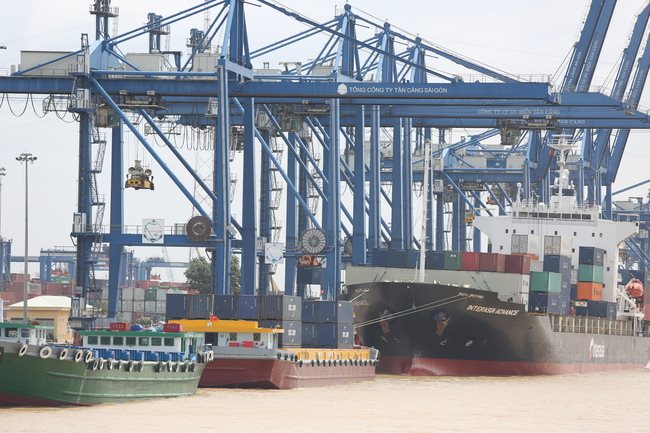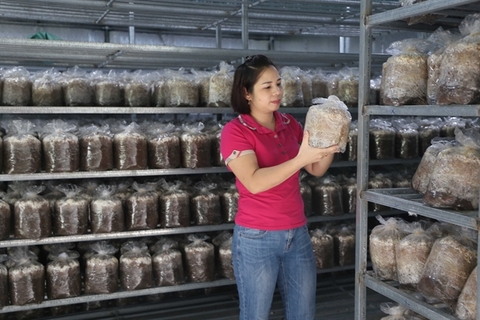WB predicts lower 2019 GDP growth for Vietnam
WB predicts lower 2019 GDP growth for Vietnam
Vietnam’s real gross domestic product (GDP) growth is expected to drop from 7.1% in 2018 to 6.6% in 2019, reflecting slower export growth and weaker agricultural production growth, according to the World Bank.

The global lender said in the October 2019 edition of its East Asia and Pacific Economic Update titled “Weathering Growing Risks,” released today, October 10, that the country’s economic growth is expected to further moderate in 2020 and 2021 to a more sustainable pace of 6.5%, in line with the potential output.
Real GDP growth is estimated to have increased by 6.8% in the first half of this year, down slightly from 7.1% a year earlier.
On the domestic front, the deceleration in agricultural output largely stemmed from the widespread outbreak of African swine fever and severe weather conditions that reduced livestock and crop production.
Industrial growth also moderated, given the slower growth in the export-oriented manufacturing sector. A modest decline in the pace of growth in the construction sector reflected a less sanguine real estate sector, in part due to less expansionary credit conditions and ongoing consolidation of public investment.
By contrast, the services sector continued to benefit from strong household consumption buoyed by real wage growth.
Resilient GDP growth continues to support a dynamic labor market with strong job creation and real wage growth. Job creation remains buoyant in high productivity sectors, such as manufacturing and modern services.
The WB expects inflation to stay below the Government’s ceiling rate of 4%, and the current account is estimated to sustain a smaller surplus. The fiscal deficit is also forecast to decline through 2021, reflecting ongoing fiscal consolidation efforts.
Monetary policy continues to balance growth and stability objectives. Driven by a moderation in food prices, inflation remained subdued at 2.3% in August.
Credit growth continued to expand at an average of some 13% year-on-year, slightly below the State Bank of Vietnam’s target of 14% for this year.
With moderate inflation, the Vietnamese central bank in mid-September eased its monetary policy stance, cutting its discount rate and refinancing rate by 25 basis points to 4% and 6%, respectively. The rate cut is expected to ease liquidity for banks in order to provide more credit to the economy.
Given the weak monetary policy transmission in Vietnam, the central bank continues to manage financial risks through noninterest rate measures, such as caps on credit growth and other macroprudential measures.
Vietnam remains susceptible to external factors
While Vietnam’s trade performance remains relatively resilient, it has not been insulated from escalating global trade tensions, according to the report.
Exports are estimated to have slowed from 16.3% in the first half of 2018 to 7.2% in the first six months of 2019, the slowest pace recorded since the first half of 2016 at 5.8%, albeit well above global trade growth.
Vietnam’s trade balance, nevertheless, recorded a surplus of US$1.6 billion in the first half of this year, given that the moderation in import growth more than offset the deceleration in export growth.
Vietnam appears to be benefitting from export diversion following the escalation of the China-U.S. trade dispute, according to the report.
Between January and June this year, U.S. imports from Vietnam grew by some 33% and accounted for roughly 22% of Vietnam’s total exports, an increase from 19% in the first half of 2018.
The report warned that Sino-U.S. trade tensions could lead to Vietnamese exports replacing some of the Chinese exports in the American market, as well as some U.S. exports to China being affected by China’s retaliatory tariffs.
It added that Vietnam seems to be gaining market share for those goods where the higher tariff imposed by the United States has caused Chinese exports to contract, such as phones and phone parts, computers, apparel, footwear, furniture, steel and plastics.
Concurrently, with a trade to GDP ratio of close 200% in 2018, Vietnam is exposed to heightened uncertainty and potential disruptions to global supply chains.
Further, given the widening trade surplus with the United States, Vietnam could also become a target for tariff and other trade-related protection measures from the world’s largest economy, according to the report.




















